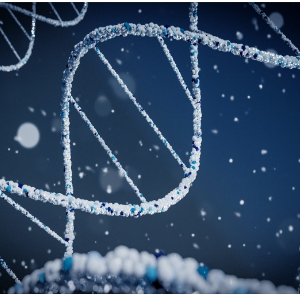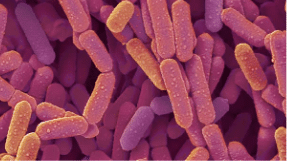source of genetic material- DNA
About hereditary
- Heredity, also called inheritance or biological inheritance, is the passing on of traits from parents to their children either through asexual or sexual reproduction.
- The offspring cells or organisms acquire the genetic information of their parents. Because of heredity, variation between individuals can accumulate and cause species to evolve by natural selection.
- The concept of heredity encompasses two seemingly paradoxical observations about organisms; the constancy of a species from generation to generation and the variation among individuals within a species.
- More specifically, it is the transmission of traits from one generation to the next, these traits can be physical such as eye colour, blood type or a disease or behaviour
- Heredity traits are determined by genes, and a single gene can have several variants called alleles and there are two copies of each gene in our cells.
- One of the copies from the egg and the other from the sperm and the two copies are not necessarily identical.
- The alleles of the same gene can have a dominant or recessive relation with one another, if both alleles are different and at least one of them is dominant of the two alleles, the dominant one will be the one that will be expressed. Vice versa, a non dominant allele will not be expressed in an individual if both parents pass down the same allele.
- As a result, even if a non dominant allele is present in the genotype , it will not be observable in the phenotype.
What are genotypes and phenotypes and heredity?
- Organism’s genotype is the set of genes that an offspring inherits from both parents, which is the combination of genetic material of each.
- Phenotype is the organism’s outward appearance and the developmental outcome of its genes.
- The genotype determines the broad limits of the features an organism can develop.
- The phenotype includes an organism’s bodily structures, physiological processes and behaviours. The phenotype depends on complex interaction between genes and their environment.
- The organism’s internal and external environments change continuously and so do the phenotypes, though the genotype remains constant throughout an organism’s lifetime.
DNA and Heredity
- Heritable traits are known to be passed from one generation to the next via DNA, it is a molecule that encodes genetic information.
- DNA is a long polymer that incorporates four types of bases that are interchangeable. The Nucleic acid sequence specifies the genetic information.
- The DNA is copied before the cell is divided through mitosis. A portion of DNA molecule that specifies a single functional unit is called a gene.
- DNA sequences can change through mutations, producing new alleles. If the mutation occurs within a gene, the new allele will affect the trait that the gene controls.
Mendelian Inheritance and modern development of genetics and heredity
Table showing how the genes exchange
- Gregor Mendel published his work in 1866 but none of his contemporaries appreciated its significance, it was until 1900, 16 years after his death his work was rediscovered independently by Hugo de Vries, Carl Erich Correns and Erich von Seyesenegg.
- Mendel experimented on hybrids of different varieties of plant but he focused on the common pea plant.
- It was initially assumed that Mendelian inheritance only accounted for qualitative differences, such as those seen by mendel in his pea plants.
- The idea of additive effects of quantitative genes was not realised until R.A. Fisher’s paper.
- In the 1930’s, work by Fisher and others resulted in a combination of Mendelian and biometric schools into the modern evolutionary synthesis.
- The modern synthesis bridged the gap between experimental geneticists and naturalists and palaeontologists, stating that –
- First – All evolutionary phenomena can be explained in a way consistent with known genetic mechanisms.
- Second – evolution is gradual; small genetic changes, recombination ordered by natural selection.
- Third – Selection is overwhelming the main mechanism of change and even slight advantages are important when continued.
- Fourth – the genetic diversity carried in natural populations is a key factor in evolution.
14/01/2022
Tags:
Life SciencesOther Articles
Next
Goa – Erakina
Next
February 4, 2022
Goa – Erakina
Previous
February 4, 2022





